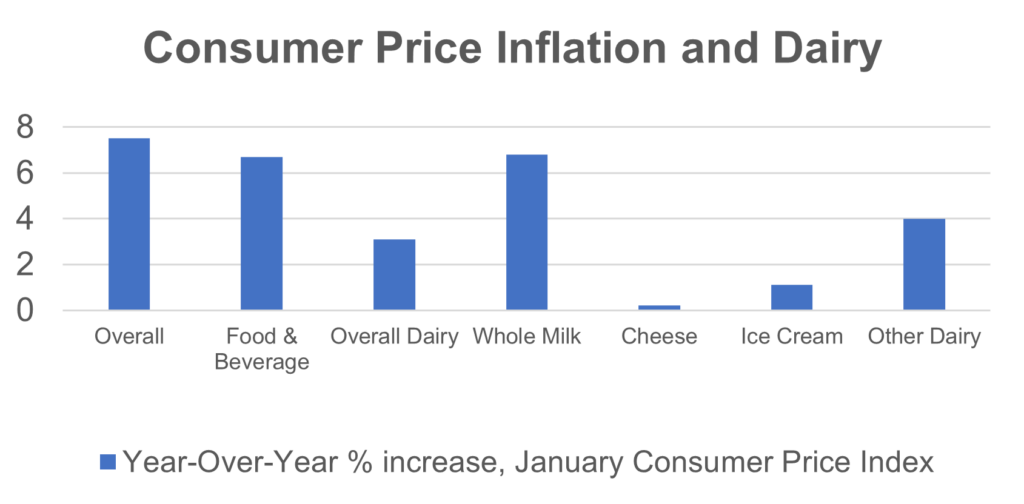The National Milk Producers Federation (NMPF) this month celebrates a mini-milestone on the path to normal: A return to our in-person March board meeting for the first time since March 11, 2020, when we met at the same moment that lockdowns and cancellations engulfed the country.
We expect smoother sailing this time around. But of course, much of our work is informed by the lessons of the past two years, which have been challenging for our industry, to say the least. That experience is a major – but far from the only – motivator behind a significant undertaking of 2022: Working to modernize the Federal Milk Marketing Order (FMMO) system.
FMMOs, the bedrock of orderly milk marketing, showed signs of stress during the pandemic and are ripe for review after more than two decades without any significant updates. NMPF is the natural leader of this discussion and the logical place to formulate a plan. But it’s critical, as serious discussions get underway for what would be the first major changes to FMMOs since 2000, to understand what the conversation needs – and what it doesn’t.
First: We support federal marketing orders, which have promoted orderly milk markets for nearly a century. A well-functioning federal order system at its best works as a model of the industry itself, providing a fair and transparent program that benefits producers and consumers, and that accounts for the unique needs of producers and cooperatives through a referendum process to approve any proposed changes.
And just as the industry changes, the FMMO system must adapt to reflect the new realities in today’s milk markets. The reasons for modernization are many. The current Class I mover needs to be reviewed, as $750 million in farmer revenue losses during the second half of 2020 compared to the previous mover formula attests. Make-allowances that address the cost of processing milk into manufactured products haven’t been changed in years and may need adjustment, as suggested in a recently released, USDA-commissioned study. The average fat and protein levels in milk from the farm are higher today than they were in 2000, but current federal pricing formulas don’t accurately reflect this increased component content.
These are only a few top-line concerns from a much longer list. Many recent headaches for farmers over the past several years, from the block/barrel spread to negative PPDs and the resultant widespread de-pooling were in part an effect of federal orders, but not caused by them; and tweaks to the program could have positive impacts that ameliorate these types of issues in the future.
In response, NMPF has been taking the lead in delving deeply into these and other issues, convening its Economic Policy Committee and Board of Directors to examine the critical issues and determine those best addressed through a national marketing-order hearing and which may be separate issues or ones best addressed through regional order hearings. We’ve spent the past several months soliciting farmer and co-op insights and creating a task force of co-op technical experts who have been delving into marketing orders from top to bottom.
The one thing everyone can agree on is, a lot of suggestions can be laid on the table. That’s the easy part. But once that happens, conversations quickly become more complicated. That’s where we’ll need patience, and a heaping amount of good faith engagement, in the months ahead.
Dairy is a complex industry. Sometimes farmer and processor interests diverge; at other times, through a cooperative, the farmer and the processor is the same person. Industry structures vary widely by region. A strength of the marketing-order system – and a compelling reason to keep it robust – is that it’s decentralized, with different regions customizing their orders to meet their unique needs.
But that local strength inevitably complicates a national effort. That’s why it will be incredibly important to avoid zero-sum thinking throughout this process – the moment one party sees someone else’s gain as guaranteeing their loss, consensus becomes impossible. There are many ways to create win-wins that benefit all farmers or find solutions that balance any tradeoffs by bringing benefits in various ways. This is Compromise 101 – it’s basic, but also very difficult. It’s also central to succeeding in national marketing-order hearings. Without it, everyone could save time and turmoil by avoiding tough talks altogether.
And that brings up a second point. FMMO discussions need to focus on seeking solutions rather than on posturing for undefined “change” that doesn’t materialize when it’s time to make complex decisions.
In the past year, a few industry observers have talked up the need for “reform” or “simplifying” federal orders without offering specifics of what that may mean. If the net effect of federal order reform is to lower prices, that’s hardly the kind of change we’re interested in advancing. Individual initiatives certainly have their place – you can’t craft the best policies if ideas aren’t proposed in the first place. But proposals that merely benefit the proposers, without careful consideration of broader implications, won’t translate well when offered across the full range of dairy farmers. And calls for change are quickly reduced to grandstanding if specifics don’t materialize in a reasonable amount of time.
This is where NMPF and its members become indispensable to any solution that works for dairy farmers.
As the one dairy organization that truly represents dairy’s full diversity – farmers of all sizes, all regions, and all marketing orders – we are bringing the broadest array of serious voices to the table to craft the nationwide consensus needed to make pricing improvements a reality. Our goal is a presentable plan to modernize the FMMO system. When that occurs, it won’t be loved in all ways, by all producers. But we can guarantee it will bring progress, with tangible gains for dairy farmers, and be a plan that advances the needs and interests of the dairy community.
It’s a big job, but together we can do it. We’ve been through a lot together, and we’ve learned a lot. It’s time to take these lessons and build a better future for dairy, with the consensus that always brings out our best.








